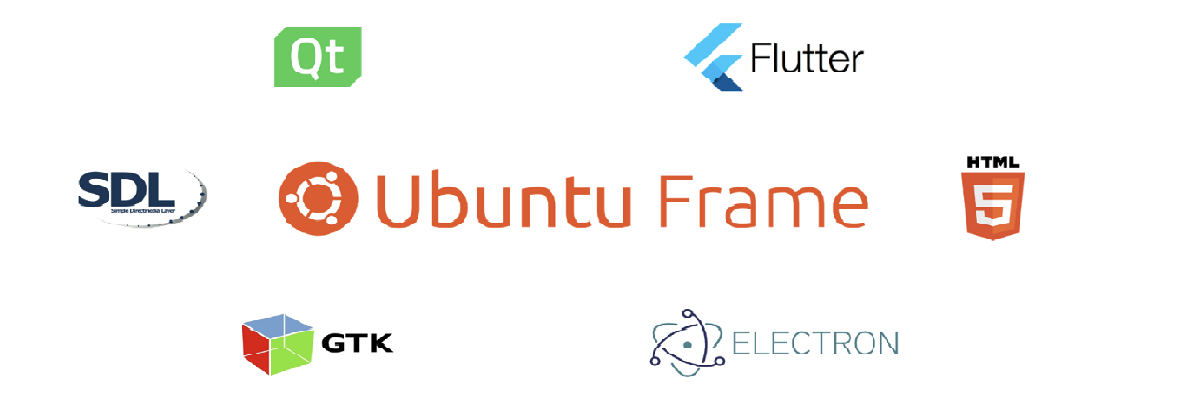
Canonical has unveiled the first release of Ubuntu Frame, which is a new operating system that is oriented for use in Internet kiosks, self-service terminals, information stands, digital signage, smart mirrors, industrial displays, IoT devices and other similar applications.
The shell is designed to provide a full screen interface for a single application and is based on the Mir display server and the Wayland protocol.
According to the company, the availability of Ubuntu Frame now means that developers do not need to integrate and maintain partial solutions such as DRM, KMS, input protocols or security policies. This will free up more time for developers to focus on the content that will be displayed on the screen and will reduce the number of bugs and vulnerabilities in code that is no longer needed.
About Ubuntu Frame
Ubuntu Frame can be used to run GTK, Qt, Flutter and SDL2 based applications, as well as Java, HTML5, and Electron-based programs.
It is possible to start both applications compiled with support by Wayland as programs based on X11 protocol (used by Xwayland). To organize work in Ubuntu Frame with separate pages or websites, the Electron Wayland program is developed with the implementation of a specialized full-screen web browser, as well as a port of the WPE WebKit engine.
For a quick preparation and implementation of solutions based on Ubuntu Frame, it is proposed to use packages in snap format, with the help of which the launcher programs are isolated from the rest of the system.
"Ubuntu Frame makes it easy for our customers to create more secure, reliable and customizable smart retail and digital signage solutions while harnessing the power of Lenovo's ThinkEdge platforms," said Blake Kerrigan, GM Edge Computing, Lenovo Intelligent Devices Group.
When developing the solution, the goal was to minimize development and deployment time to create graphical solutions for peripheral devices by leveraging existing applications and strengthening security techniques.
The Ubuntu Frame shell is adapted to run on top of the Ubuntu Core system environment, a compact version of the Ubuntu distribution that comes in the form of an indivisible monolithic image of the base system that is not divided into separate deb packages and uses an atomic system-wide update mechanism.
The components of Ubuntu Coreincluding the base system, Linux kernel, system plugins and additional applications, they come in snap format and are managed by the snapd toolkit.
Span components are isolated using AppArmor and Seccomp, creating an additional line to protect the system in case individual applications are compromised. The underlying file system is mounted read-only.
“The reliability of Ubuntu Frame has been extensively proven in the field. Its technology has been in development for over 7 years and in production for 5 years, using state-of-the-art techniques, and has been implemented in production for Linux desktop and mobile users. As such, Ubuntu Frame is one of the most mature graphics servers available today for embedded devices. Michał Sawicz, Canonical's director of smart display engineering.
To create a custom kiosk limited to the operation of an application, the developer only needs to prepare the application itself, and all other equipment maintenance tasks, keeping the system up-to-date and organizing user interaction are assumed by Ubuntu Core and Ubuntu Frame, including support for screen gesture control on systems with touch screens.
It is stated that updates to fix bugs and vulnerabilities in Ubuntu Frame versions will be generated for 10 years. Optionally, the shell can be run not only on Ubuntu Core, but also on any Linux distribution that supports Snap packages.
In the simplest case, to deploy a web kiosk, simply install and run the ubuntu-frame package and configure various configuration parameters.
The developments of the project are distributed under the GPLv3 license. Snap packs are ready for download.
Finally, if you are interested in being able to know a little more about it, you can consult the details in the following link